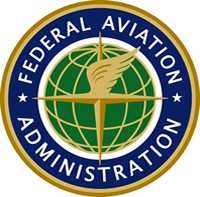Tue, Oct 20, 2009
Revisions For 14 CFR Parts 1, 21, 43, And 45
 The FAA has published new regulations for manufacturers of
aircraft and aviation products that will update and standardize FAA
requirements to better align them with the current global
manufacturing environment.
The FAA has published new regulations for manufacturers of
aircraft and aviation products that will update and standardize FAA
requirements to better align them with the current global
manufacturing environment.
"We want to make sure that all aircraft and parts designed for
them meet the highest standards no matter where they are
manufactured or who makes them," said FAA Administrator Randy
Babbitt. "These changes to our certification rules will help us do
that."
The aircraft manufacturing industry has evolved significantly
over the past several decades. The FAA first issued most of its
certification rules in 1964, when a typical business model involved
many aircraft manufacturers with relatively few suppliers. Today,
there are fewer manufacturers, but the number of suppliers has
increased. Many of those suppliers are located outside the United
States and build much larger portions of the aircraft than in
earlier years.
The major changes to the regulations include:
- Standardization of quality control system requirements for all
aviation manufacturers.
- Updated export requirements to facilitate global acceptance and
documentation of parts.
- Standardization of part?marking and identification requirements
so they align with other countries' rules, and consolidation of the
requirements into one regulation.
- Updated and standardized language in the regulations for
production approvals, exporting and identification marking.
The amendments will update and standardize those requirements
for production approval holders (PAHs), revise export airworthiness
approval requirements to facilitate global manufacturing, move all
part marking requirements from part 21 to part 45, and amend the
identification requirements for products and articles. The intent
of these changes is to continue to promote safety by ensuring that
aircraft, and products and articles designed specifically for use
in aircraft, wherever manufactured, meet appropriate minimum
standards for design and construction. As a result of this action,
the FAA's regulations now better reflect the current global
aircraft and aircraft products and articles manufacturing
environment.
The new rule will take effect April 14, 2010.
More News
“While legendary World War II aircraft such as the Corsair and P-51 Mustang still were widely flown at the start of the Korean War in 1950, a new age of jets rapidly came to >[...]
Decision Altitude (DA) A specified altitude (mean sea level (MSL)) on an instrument approach procedure (ILS, GLS, vertically guided RNAV) at which the pilot must decide whether to >[...]
Aero Linx: National Aviation Safety Foundation (NASF) The National Aviation Safety Foundation is a support group whose objective is to enhance aviation safety through educational p>[...]
Also: Cal Poly Aviation Club, $$un Country, Arkansas Aviation Academy, Teamsters Local 2118 In response to two recent general aviation accidents that made national headlines, more >[...]
“The FAA is tasked with ensuring our skies are safe, and they do a great job at it, but there is something about the system that is holding up the medical process. Obviously,>[...]
 Aero-News: Quote of the Day (04.28.25)
Aero-News: Quote of the Day (04.28.25) ANN's Daily Aero-Term (04.28.25): Decision Altitude (DA)
ANN's Daily Aero-Term (04.28.25): Decision Altitude (DA) ANN's Daily Aero-Linx (04.28.25)
ANN's Daily Aero-Linx (04.28.25) Airborne-Flight Training 04.24.25: GA Refocused, Seminole/Epic, WestJet v TFWP
Airborne-Flight Training 04.24.25: GA Refocused, Seminole/Epic, WestJet v TFWP Aero-News: Quote of the Day (04.29.25)
Aero-News: Quote of the Day (04.29.25)



